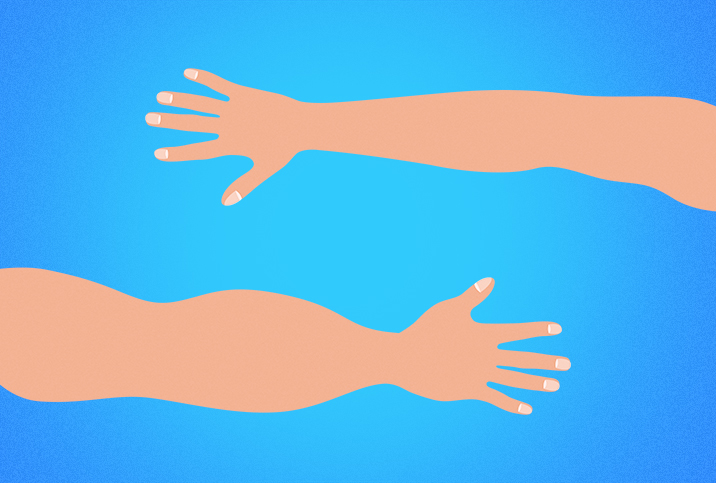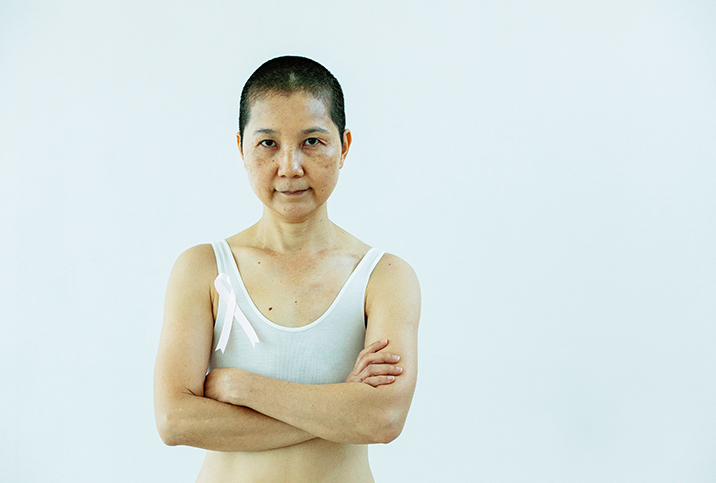Lymphedema: A Common Side Effect of Breast Cancer Surgery

Breast cancer is one of the most common cancers affecting American women, and the effects of treatment can be debilitating. Cancer patients experience many conditions related to surgical interventions and chemotherapeutic drugs.
"The challenges faced by cancer patients will often depend on the type of cancer and treatment experienced by each patient individually," said Annabelle Lane, communication director for The World Cancer Research Fund. "It is common for many patients to have some challenges centered around…managing side effects."
One such side effect is lymphedema, which can result after lymph nodes are removed during surgical breast cancer interventions.
The causes of lymphedema
Lymphedema is inflammation of the chest, armpit and surrounding areas of the torso as a result of lymph node removal. This is a very common surgical intervention that often accompanies a lumpectomy or mastectomy in an effort to prevent metastasis (the spread of cancer).
Typically, the risks of developing lymphedema increase with the number of lymph nodes removed. According to Living Beyond Breast Cancer, women who have had 10 or more lymph nodes removed are at the greatest risk of developing this condition.
Not every cancer patient will develop lymphedema, as the causes are often a cumulative result of the specific type of chemo, radiation and surgical treatments a patient receives. These factors and each patient's biology will impact the type and extent of lymphedema.
Lymphedema is most common in the days and weeks following surgery, and can occur up to two years following lymph node removal.
Regardless of how many lymph nodes are removed, the remaining nodes continue to make lymph fluid as part of their regular function. When scar tissue and treatments interfere with the movement of this fluid, it can back up in the lymph nodes and surrounding tissue, causing uncomfortable and often painful swelling.
Lymphedema is most common in the days and weeks following surgery, as your body is recovering and adjusting to the surgical trauma. What many patients don't know is lymphedema can occur up to two years following lymph node removal, so it is important to monitor recovery and tell your doctor about any prolonged or new swelling in the surgical site or surrounding areas.
The symptoms of lymphedema
The most obvious symptom of lymphedema is swelling, but it can be mistaken for postoperative swelling or edema. For this reason, if your swelling continues for many months after surgery, or if your postoperative swelling reduces and returns, you should consult your surgeon or oncologist.
There are three common types of lymphedema:
- The mild form occurs immediately following surgery.
- General lymphedema can occur four to six weeks after surgery.
- The third and most common type typically occurs 18 to 24 months following surgery and is often painless, according to Johns Hopkins Medicine.
In extreme cases, the swelling can be so severe that a patient's arm can be temporarily lengthened, but this is not common. In addition to swelling, patients should watch for tightness or fullness in the chest, clothing not fitting properly, generalized pain in the chest, arm weakness and changes in the skin on the side of the lymph node removal.
It's important to monitor the length of swelling, surgical complications and any abrupt changes to your daily well-being in the months following surgery. The more you document your symptoms, the easier it will be to communicate with your doctor and improve the chances of an accurate diagnosis.
Treatment and prevention
Your doctor may order an MRI, CT or ultrasound to verify your diagnosis. This can help your doctor understand the extent of your swelling and create the best treatment plan for you.
Because there is no cure for lymphedema, your doctor will focus on reducing swelling through antibiotics and therapeutic exercise, and preventing any further complications. Often doctors will prescribe a compression sleeve to be worn continuously, as well. For more severe cases, your doctor may recommend surgery, which can create new pathways between lymph nodes and blood vessels, and remove scar tissue.
There are several measures doctors recommend to prevent lymphedema from occurring in the first place. These include physical therapy, lymph drainage, compression bandages and a slow progression of strength training.
Because there is no cure for lymphedema, your doctor will focus on reducing swelling through antibiotics and therapeutic exercise, and preventing any further complications.
One of the hardest parts of surgery is allowing yourself enough time to properly recover. For many patients, consulting a physical therapist beforehand can be helpful in developing a more comprehensive recovery plan.
Patients are often so focused on starting treatment and getting back to their lives, they forget they have time to create a team of experts who can help them cope with treatment and recover properly, explained Jean Sachs, CEO for Living Beyond Breast Cancer.
"We hear the word 'cancer,' and we think we need to act quickly, but there are so many therapies that can prepare the body for treatment, which many patients only learn about after their treatment," Sachs said. She went on to add that "these preventive therapies can help to avoid the secondary complications of lymph removal, such as lymphedema."
No two patients are alike
Regardless of your diagnosis, it's important to remember that your current health, health history, heredity and specific cancer type will dictate your breast cancer treatment and how your body responds during and after it.
Lymphedema is a common and treatable inflammatory condition, but effective recovery often involves communication with your medical team, proper rehabilitative therapy and self-care. Remember, though your body improves each day, it is recovering from major surgery. Rushing this recovery can delay rather than expedite your return to your regular activities.


















